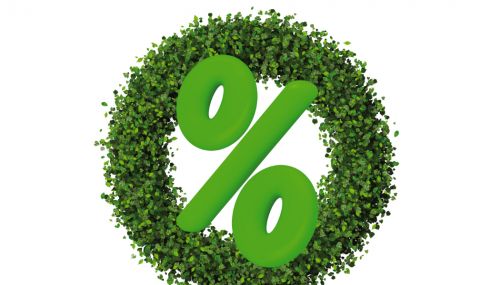NORA President discusses the future of liquid heating fuels in light of ASTM’s favorable decision
The recent decision by ASTM International to approve performance specifications for blends of 6 percent to 20 percent biodiesel with traditional heating oil opens new doors for energy marketers. Blends of ultra low sulfur heating oil and biodiesel burn cleaner than traditional heating oil with reduced greenhouse gas emissions, which could change how consumers and regulators view the product – and improve heating oil’s competitive position.
Oil & Energy recently connected with John Huber, President of the National Oilheat Research Alliance (NORA), to discuss the future of Bioheat® fuel, in light of the ASTM decision. “Breaking through ceilings, overcoming limits, and pushing boundaries, that is how we grow,” Huber said. “Fortunately, we as an industry did that by getting ASTM to allow us to move to B20 and respond to the critics of our fuel, as we make Bioheat the 21st Century Fuel.”
The NORA President fielded numerous questions about how the heating oil industry can leverage cleaner fuels to the advantage of marketers in the years ahead.
Oil & Energy: ASTM International has voted to approve new specifications for B6 to B20 Bioheat® fuel blends. Please explain the significance of this development.
John Huber: As we move into new fuels, ensuring the properties of those fuels are suitable for use in a home heating system is very important. The ASTM process allows for careful examination of the fuel and the key properties for its use in heating appliances. This process essentially evaluates whether such a fuel, B20, can be safely used in heating oil appliances. Thus, the passage of the standard is the first step in allowing those fuels to be used. However, each dealer and manufacturer must then decide what levels of fuel are appropriate for his or her customers or their equipment.
O&E: What is your general vision for how the industry might use its improved fuels (B20 and ultra low sulfur heating oil) to improve its position in the eyes of consumers and regulators?
JH: The industry must understand that the use of biodiesel empowers the industry to have a clean and green fuel, and that it is another critical step this industry is taking to ensure that our customers can always use liquid fuels.
O&E: How significant are the emissions reductions that can be achieved by replacing traditional heating oil with B20 Bioheat® fuel?
JH: We look at a B20 Bioheat® fuel as a combination of ultra low sulfur diesel fuel and 20 percent biodiesel. At that level, we have reduced sulfur from 2,000 ppm to less than 10 ppm. So that is a reduction of 99.5 percent of sulfur-borne particles, which are the main particulate from current heating systems. Biodiesel reduces CO2 emissions by about 80 percent compared to heating oil. Thus a 20 percent reduction results in a 16 percent reduction in CO2 emissions, which is the prime greenhouse gas associated with heating oil. We also believe this positions us as the most environmentally friendly major heating fuel.
O&E: How important is the ultra low sulfur (ULS) aspect, as heating oil moves away from higher sulfur fuels?
JH: The two must move together. Having a fuel that reduces greenhouse gases but ignores sulfur would mean that we are still contributing to health and visibility issues. Thus, we must work on ensuring that ULS is the predominant fuel for this industry. ASTM and the industry are now working on establishing a standard for this fuel.
O&E: Do you see B20 and ULS as two sides of an important improvement in heating oil fuel quality?
JH: Absolutely, and we should also remember these clean fuels will empower our next generation of high efficiency equipment, which will be more compact and will use cheaper materials.
O&E: Would the heating oil industry be best served by having a B20/ULS blend be the standard heating oil product sold everywhere?
JH: Having a standard is very useful. It allows for standardization and allows for equipment and handling to develop for a specific fuel. However, there are pressures to improve, and we must respond to political pressures to reduce Greenhouse gases. Thus, the B20 may merely be a waypoint on our journey and is unlikely to be our final destination.
O&E: What sort of transition and schedule do you envision for going from today’s fuel to those optimized fuels?
JH: Now that we have a fuel standard in place, our leading appliance and burner manufacturers will begin ensuring that the equipment they make works with these fuels and also look at higher blends. As they put those materials into the field, we will be better able to see what future steps we need to do to get to this fuel level, and what the step after it will be. Doing this smoothly to minimize costs for homeowners and our companies is key to a successful transition. So, while it would be nice to be at the final destination tomorrow, we must be careful in our movement to that destination. Also, any time a fuel changes, careful consideration of warranties of equipment in the field must be evaluated, and appropriate training should occur.
O&E: Is the Oilheat industry better prepared to succeed with regulators once B20/ULS fuel is in widespread use?
JH: Absolutely. We have a great story to tell now and with the state-level conversions to ultra low sulfur we have taken some big steps. However, we need to continue to show progress and walk the talk.
O&E: What advantages does B20 Bioheat have for service technicians? Do heat exchangers stay cleaner longer when B20/ULS is used in place of traditional heating oil?
JH: Yes. As the sulfur moves out either through direct removal or by adding biodiesel in the distribution system, the fouling of the heat exchanger will be greatly reduced. Essentially, when you are operating on these fuels the heat exchanger will be nearly as clean as installed after thousands of hours of operation. This will reduce service costs, and allow our technicians to focus on improving the heating system, ensuring it is working well, and to not be spending valuable time doing cleanings. However, setting up burners and ensuring air settings are set up properly will be critical, and if the industry is moving between different levels of biodiesel, these air settings may need to change.
O&E: Is heating efficiency improved as well?
JH: Yes, the fouling of the heating system essentially insulates the heat exchanger, and thus reduces efficiency. The German organization IWO’s studies indicated an efficiency improvement of 1-2 percent resulted from the use of ULS.
O&E: For regulators who are comparing fuels based on their emissions profiles, is B20/ULS heating oil as effective at limiting GHG emissions as natural gas is?
JH: We would disagree with any regulator who thinks that using natural gas reduces GHG emissions. Based on pure fuel chemistry natural gas reduces CO2 emissions. However, that ignores methane and natural gas leakage. Methane is a very serious gas, and according the latest evaluation, methane has a lifetime of 12.4 years and with climate-carbon feedbacks a global warming potential of 86 over 20 years and 34 over 100 years. Essentially, that 86 should be compared to 1 for CO2, and it does not take much leakage to have much more impact on the environment.
O&E: At what level of biodiesel blending does heating oil (using ultra low sulfur oil as a base) become equivalent to natural gas, in terms of carbon dioxide emissions? Does this calculation reflect burner-tip emissions only, or are fuel lifecycle calculations used?
JH: Studies that have been prepared have found heating oil to be equivalent to natural gas when evaluated over 20 years. This science is not fully developed, because no one knows how much methane is really leaking. Also, how biodiesel impacts the environment has been studied. Initially, some in the environmental community indicated biofuels like ethanol are harmful because people were burning down the rainforests in Brazil and Malaysia to produce palm oil or sugar cane to turn it into fuel, but the relationships between our use of fuels and who grows what fuel in Brazil is very complex, and assumptions as to what is happening are key. However, at the end of the day, we think if you take the best case for gas and the worst case for Bioheat, the two fuels become equivalent with a blend of approximately 20 percent.
O&E: Does NORA have a plan for disseminating information about B20/ULS blends to regulators at either the state or federal levels to build an understanding of the fuel quality improvements?
JH: This has not been a role for NORA. We develop the strong science, and then rely on state associations and dealers to communicate the facts as appropriate.
O&E: Does NORA plan to recommend new Bioheat® mandates at the state level to help protect the industry and its companies against unfavorable regulation?
JH: NORA cannot do this, as it is prohibited by our statute. Additionally, we would not want to have mandates that lead to new consumer costs or are in front of where the manufacturing industry is.
O&E: Is it important for consumers to know that the heating oil industry itself has been pushing for cleaner burning fuels, as opposed to waiting on regulators? How does this reflect on the industry?
JH: It is very important that we move forward on our own initiative. Many states would adopt a strategy of converting our customers to wood or natural gas as the prime approach. Thus, we must present them with a solution that works, and not one that merely improves someone’s market share.
O&E: In New York City, NYOHA has maintained a “seat at the table” by committing to ULS and Bioheat as the City works to reduce GHG emissions. Can other associations use clean fuels to become “part of the solution” in other jurisdictions?
JH: Absolutely, and I think that many are following the lead of NYOHA in this effort. And as you may know, John Maniscalco the leader of NYOHA is retiring, so the industry will need to find both a new association to lead, and an individual as courageous as John to step out and show the way forward.





